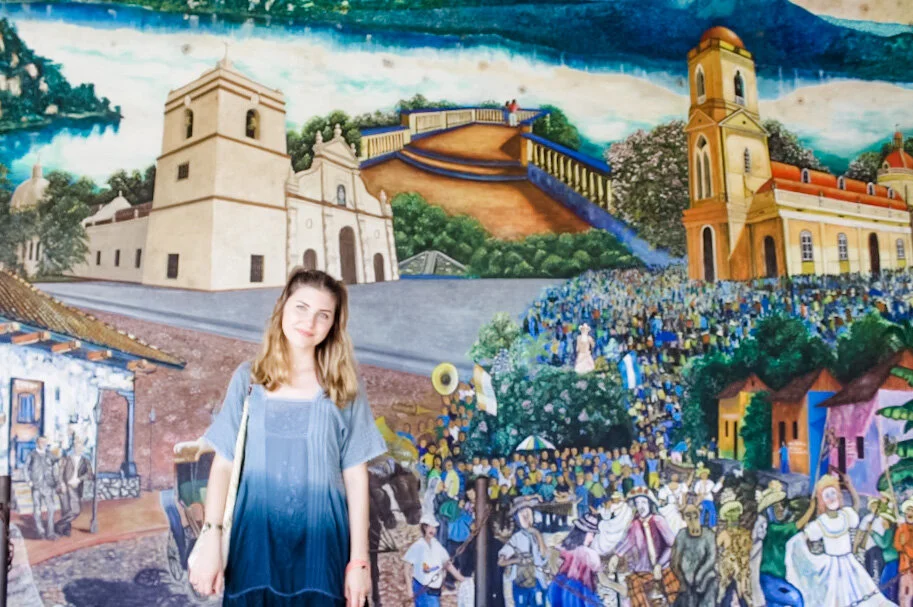Mandaringuistics, Part 3: Rhyme Thyme
Contents
0. Intro
Syllable structure
Note on Pinyin spelling
1. Rhymes consisting of a single vowel sound (a, e, wu, yi, yu)
2. Rhymes with medials ending in pure vowels (wa, wo, ya, ye, yue)
3. Rhymes ending in glides (ai, ao, ei, ou)
4. Rhymes ending in nasals (an, ang, en, eng)
5. Overview: all the rhymes of Mandarin
0. Intro
Hello, Mandarinos!
Today I’d like to tell you about one of the fundamental divisions of the Mandarin syllable: 韻母 yùnmǔ ‘the rhyme’, sometimes also called “the final”. When we say a syllable aloud, the initial consonant is heard only briefly; the bulk of a syllable’s duration is taken up by the rhyme (see the image below for a visual representation of this phenomena). This is true of English syllables, too.
I use boldface for strings of speech sounds taken out of the context of an utterance, and italics for meaningful words. So to refer to the word 好 meaning ‘good’, I write hǎo, whereas hao signifies ‘a syllable with initial h- and final -ao (in any tone)’. Phonetic symbols of the International Phonetic Alphabet (IPA) are enclosed in [square brackets], while letters of the (Roman/English/Pinyin) alphabet are written in CAPS.
Syllable structure
We divide the Chinese syllable into two parts: (1) the initial, and (2) the rhyme (see below). Here, the “C” stands for ‘consonant’ and “V” for ‘vowel’.
Basic syllable types in Mandarin.
While the syllable-final sounds [-j, -w] are spelled with vowel letters I, O, U in Pinyin, they are best regarded as consonants just like final -n and -ng. Sometimes a glide consonant [-j-, -w-] appears between the initial and the main vowel. This glide is symbolized by “j” below.
Mandarin syllables with a medial glide consonant (written -i-, -u-).
For example, in the word 來 lái ‘to come’, the initial is the consonant l-, and the rhyme is everything else (including the tone) after we’ve stripped away the initial: -ái. Sometimes there is no consonant sound in the initial position of a syllable. Such syllables are said to have a “zero initial.” Examples include 安 ān ‘settled, peaceful,’ 一 yī ‘one,’ and 五 wǔ ‘five’ (Note that the letters Y and W in those last examples are written but not heard.)
Note on Pinyin spelling
In the 漢語拼音 Pinyin spelling system, certain sounds are represented in more than one way. (Recall that English often has many ways of spelling a single sound, as for the vowel [i] in feat, feet, effete, petite.) In this post I will treat certain spellings as basic and others as being derived from these basic spellings.
For example, we just saw the syllable 一 yī ‘one,’ which is pronounced more like English “E” than like the pronoun “ye.” Here two letters (Y, I) represent a single sound, the vowel [i]. When this sound co-occurs in a syllable with another vowel, the spelling of [i] changes: if the initial is zero and the vowel following [i] is the open vowel a, we write simply ya (rather than yia or ia; yi + -a → ya). When an initial consonant is added, the result will be spelled yet another way: for instance j- + yi + -a → jia. Simply stated, the rule is that the consonant letters Y and W mark the onset of a syllable; when the onset position is filled by a consonant, vowel letters are used instead to represent the sound [i].
In certain combinations the sound of yu is represented by the symbol ü (as it is also in German spelling), for instance after the initial n-: 女 nǚ ‘female.’
Let’s look first at the simplest of the rhymes, namely those with just a single ingredient.
1. Rhymes consisting of a single vowel sound
In the lexical words of Mandarin (excluding exclamation words such as 喔 ō meaning ‘Oh, I see!’), only five pure-vowel sounds can make up the rhyme (all other rhymes being composite). In Pinyin alphabetical order and with characters given for reference, they are 阿 a, 餓 e, 屋 wu, 衣 yi, 於 yu (listen to the sound clip below to hear these sounds).
Two of these are troublesome to native English speakers: 餓 e and 於 yu. 餓 e has a much darker sound than the vowel sounds spelled with E in English, and strikes the ear as being close to the sound of U in the word “dull,” or to OO in “good.” In articulatory terms, it is a mid unrounded back vowel [ɤ]: the tongue is in position for [o] but the lips are spread rather than rounded. The vowel of 於 yu has the same sound as the U in French tu ‘you’ and the Ü in German Bücher ‘books’ (high front rounded, symbol [y] in IPA).
These five pure vowels may combine with each other in certain combinations to produce the complex rhymes discussed below. There are many restrictions on the co-occurrence of sounds in the Mandarin syllable. The 5-way contrast of these vowels is evident only with the initials n- and l- (see Table 1 for examples).
Table 1: The five pure vowels of Mandarin. Examples with initials l, n, and zero.
After initial d-, all these vowels except yu may occur; after initial b-, all occur except yu, and instead of e, o will appear (as in 波 bō ‘wave’; there are no syllables b+e, p+e, f+e in Pinyin). Initial g- occurs with a, e, and wu, but not with yi or yu.
Let’s turn next to the complex rhymes, starting with those consisting only of two vowel sounds.
2. Rhymes with medials ending in pure vowels
When one of the close vowels wu, yi, yu occurs right before another vowel sound, the close vowel is called a “medial” (meaning it is a sound ‘in the middle’ of a syllable). The main vowel will be a or one of several varieties of e/o, as illustrated in the table.
Table 2: Five rhymes consisting of medial + pure vowel.
The two rhymes here with main vowel a are pretty straightforward: wa (= wu + a) is roughly the same as the first syllable of English “water”, and ya (= yi + a) sounds much like German ja ‘yes’. The vowel a does not combine with yu.
The other rhymes are a little more complicated, as certain sound changes take place: when the mid vowel e occurs in the environment of a labial sound, it is pronounced and spelled o, so wu + e → wo. The resulting syllable sounds a bit like the way a British speaker says “war” (and not at all like “whoa” or “woe”).
When it combines with medials yi and yu, the mid vowel e shifts forward in the mouth to sound like the [ɛ] of English “net”. In English this sound cannot normally end a word (except in marginal cases like “meh”. The syllable yi + e → ye sounds just like English “yet” with the final sound omitted; yu + e → yue is very close in sound, the difference being that the lips are rounded at the beginning of the syllable.
The next batch of rhymes include diphthongs (double vowel sounds, like in English “eye”, “hey”, “how”, “owe”) and triphthongs (triple vowel sounds, as in “why” [waj], “yo” [jow]).
3. Rhymes ending in glides (ai, ao, ei, ou)
In these rhymes the final sound in the syllable (called the “coda”) is a glide consonant: palatal [j], which is articulated the same as the vowel [i], or labial [w], which is articulated like [u]. (Note that in Pinyin this coda is spelled with vowel letters, namely as o after a, and as u after o.) There is in Mandarin a constraint that if a syllable has a palatal coda [j], it cannot have a palatal medial (yi or yu -- there is one exception to this: 崖 yái ‘cliff’); and if a syllable has a labial coda [w], it cannot have a labial medial (wu or yu). The combinations that occur are shown in the following tables.
Table 3: Rhymes ending in a palatal coda [-j].
Table 4: Rhymes ending in a labial coda [-w].
In the complex rhymes here, there are no sound changes such as the ones we saw in the last group, but note that the diphthongs ei and ou actually have the same underlying main vowel, whose sound varies by its phonetic environment: recall that the main vowel e is pronounced and spelled o in the environment of a labial sound, here the coda [w]. Note also that syllables spelled you do not sound like the English word “you” [juw] (which is a syllable that does not occur in Mandarin), but are instead pronounced more like the “yo” in English “yo-yo”.
In our final group of rhymes, the syllable coda is a nasal consonant -n or -ng.
4. Rhymes ending in nasals (an, ang, en, eng)
Nasal consonants are so called because when we produce them air flows through the nasal cavity. Mandarin allows two such consonants to stand at the end of a syllable: dental -n and velar -ng (in IPA [ŋ], as in English “song”).
Table 5: Rhymes with final dental nasal [ŋ].
Here there are several important adjustments in sound and spelling to take note of. When the basic rhyme an meets a high front medial yi or yu, the main vowel shifts to [ɛ] as in English “when”. So yan sounds like our word “yen” and not at all like “yawn” or the German name Jan. When the vowel e occurs with the coda -n, it shifts to schwa [ə], so en sounds more like the English prefix “un-” than the letter-name “N”. While the main vowel e remains (in spelling) in the rhyme wen, it too is read as a schwa [ə], so that this rhyme sounds close to the English word “one” (and not at all like “when”). In the rhymes yi + en → yin and yu + en → yun, the underlying main vowel e is dropped in both spelling and pronunciation: yin (especially in the first tone, yīn) sounds just like English “in”, and yun like the French feminine indefinite article une (IPA [yn], when the final E is silent).
Table 6: Rhymes with final velar nasal [ŋ].
The rhymes in ang are all straightforward combinations with no sound or spelling changes involved. Rhymes eng and weng again have schwa [ə] as the main vowel, so they are close in sound to English “hung”. After medials yi and yu, the vowel e drops in sound and spelling: yi + eng → ying sounds like the first syllable of the word “English”, which is why the character 英 has the meaning ‘English’ (it is a transcription character, chosen for sound and not meaning, to represent words from a foreign language).
In the rhyme yu + eng → yong, we can see that a few changes to the underlying components have taken place. The medial yu is both labial and palatal in articulation (that is, it is yi superimposed onto wu, with the vowel sounds overlapping, “telescoping” into a single sound [y], rather than occurring in sequence, [iu] or [ui]). When this medial is added to the basic rhyme eng, the e drops, and now the palatal quality is shown by the letter Y and the labial quality by the vowel O: yu + eng → yong. I do not know of any English words or syllables that approximate this in sound, so ask a Mandarin speaker to demonstrate (or listen to it here). German jung [jʊŋ] ‘young’ (as in the name C.G. Jung) comes close.
5. Overview: all the rhymes of Mandarin
There are a few Mandarin rhymes that we have not yet considered:
er is special in that it does not combine with any initials or medials. Example words for this syllable include 二 èr ‘two’, 而 ér ‘but/and’, and 耳 ěr ‘ear’.
Final letter I after retroflex initials zh- ch- sh- r- and after dental initials z- c- s- does not rhyme with other syllables with the pure vowel yi. In these syllables a type of fusion takes place: the vowel sound merges with the initial consonant into a single sound, resulting in a retroflex vowel with zh- ch- sh- r- (for example 知 zhī ‘to know’, 吃 chī ‘to eat’), and resulting in a dental vowel with z- c- s- (for example 字 zì ‘written word’, 次 cì ‘a time’).
All the other rhymes of Mandarin are made up of the basic components a e wu yi yu, combined with each other or with coda consonants -n -ng. The following table provides an overview. Recall that [square brackets] enclose IPA symbols; spellings that are more troublesome to English speakers have these included.
Table 7: Overview of all Mandarin rhymes based on the five pure vowels a e wu yi yu.
In a future post we’ll look at a few spelling rules regarding when these rhymes combine with initial consonants. I hope you find today’s post helpful in your efforts to master the sound system of Mandarin Chinese, and to appreciate its elegance and underlying simplicity.



































Tools for helping you master some of the trickier points of German grammar, whether you’re learning it for the first time or wanting to review the fundamentals. Los geht’s!